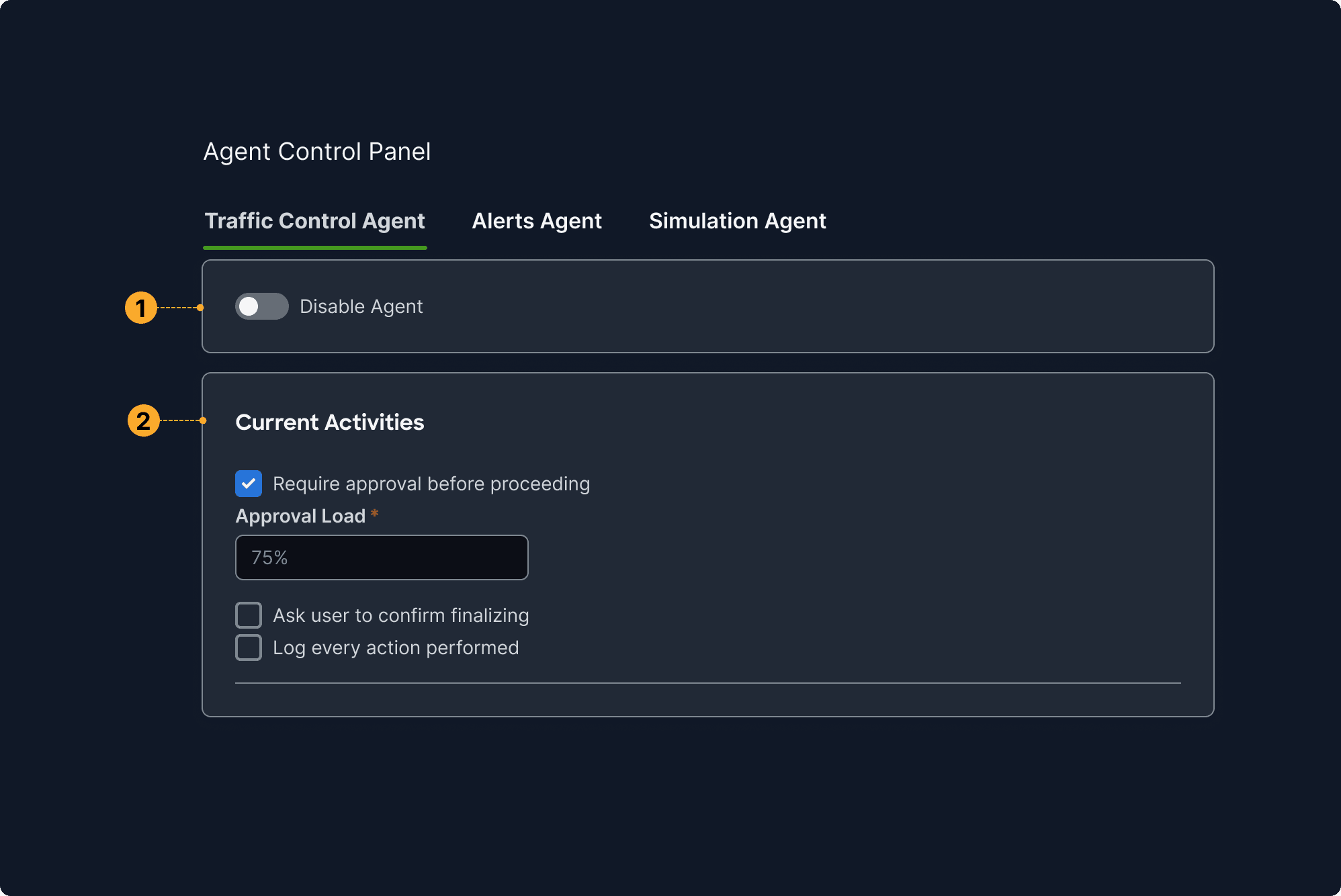
Control
Let the human set the rules
What it means
Why this matters
Related patterns

Instruction mode
Users define interaction boundaries by selecting input modes, guiding the agent to operate safely within intended, user-controlled scopes.
Task specific boundaries
Specific checkboxes define what the AI is allowed to change (e.g., title edits) and what it must avoid. These helps in defining clear behavioral constraints.

Monitoring
Agent only observes, all decisions are manually approved. This is useful for audit, analysis, or low-trust mode.
Guided
Agent suggests actions and it can analyze and simulate rerouting or bandwidth decisions. Very similar to co-pilot.
Full control
Agent manages the system autonomously and has full control to make decisions.

Immediate agent shutdown
A prominent “Disable Agent” toggle gives users a fast, irreversible way to halt all agent activity. This supports emergency intervention and restores user authority instantly.
Visible control settings
The system shows settings upfront allowing the user to assess whether to make decisions based on risks and live situations.